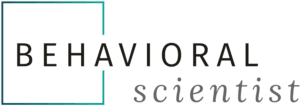Like most people, you probably feel like you have too much to do and that your organization actively conspires against you ever getting it all done. There are too many items on your to-do list, and thanks to endless interruptions and crises, you spend more time reprioritizing them than getting them done. This situation likely afflicts not just you but your entire company; deliverables are late, projects are behind, and everyone seems to be constantly scrambling to meet their objectives.
If life in the modern organization feels fundamentally misguided, you are correct. Many studies have shown that taking on too much work—a phenomenon called overload—hurts both individual and organizational performance. Psychologists have long understood that too much stress reduces the ability to perform and learn.
Similarly, studies of research and development teams show that taking on more projects than they can handle causes people to regularly switch from one task to the next depending on which project is currently getting the most pressure or is facing an imminent deadline. Task switching degrades productivity and leads to error. One recent study suggests that people spend almost 10 percent of their week just switching between different apps on their computers and phones.
Far too many leaders mistakenly believe that their organizations thrive under constant pressure. They reward managers who deliver under duress and revel in a culture in which the path to the top involves a huge to-do list, long hours, and a willingness to cut corners to get things done. At one large company we worked with, employees regularly told the story of the CEO berating a member of his leadership team for not answering email over the weekend. “If you don’t want to work on weekends, I’ll find someone who will,” he allegedly barked.
The tendency to overload represents perhaps the largest gap between research and practice in the world of management.
The tendency to overload represents perhaps the largest gap between research and practice in the world of management. Psychologists have long argued for the idea of optimal challenge, the notion that humans perform best when they are challenged just a bit beyond their current abilities. With too little challenge, we get bored and tend to fill in the gaps with our own projects or other all-too-available distractions; conversely, facing a challenge far beyond our current ability creates the frustration and anxiety of being held accountable for more work than can possibly be done. And many management scholars have shown the benefits of matching the amount of work in the system to the current capability. But despite the science, little has changed in practice.
We have come to realize that the propensity to overload work systems is deeply rooted in a fundamental misconception about how work systems perform. Ask a manager who is overloaded what they need, and the answer is always more budget and more people (or its complement, fewer things to do). This answer presumes that overload is solely a capacity problem. But that’s only part of the story.
Being overloaded changes how people manage their work, creating inefficiency and frustration due to constantly changing priorities and task switching. Eliminating these inefficiencies improves productivity to the point that capacity is often no longer a problem. In our experience, until you fix the design, adding additional resources will be largely ineffective. Adding more people without first fixing the design usually makes small problems into major ones. An already ineffective and chaotic system then becomes even bigger and more inefficient.
Being overloaded changes how people manage their work, creating inefficiency and frustration due to constantly changing priorities and task switching.
Dynamic work design focuses on getting the work to flow. A system in which work moves quickly is flexible and its direction can easily be adjusted to accommodate a changing world. An overloaded system, in contrast, is slow and difficult to redirect. And the more overloaded it is, the longer each email, product, or patient will take to work its way through.
To understand the process of learning to regulate for flow, imagine you control the number of cars that enter a long stretch of multilane highway. Your job is to maximize the flow of cars. It’s easy to see that if you allow only one car to enter, its entire journey will be unimpeded, going as fast as physics and safety allow. Something similar often happens when organizations face crises. Only mission-critical projects are allowed into the system, and they flow to completion without interruption. Such a strategy would not, however, optimize the flow of traffic.
As every driver knows, adding more cars only helps get more people where they are going up to a point. Once that threshold is exceeded, each additional car slows progress and reduces overall output and increases travel time. In the extreme case, putting the maximum number of cars on the road—every inch of concrete on the highway is now covered by a car—creates a huge traffic jam and nobody gets anywhere.
Once the traffic jam emerges, the overloaded highway becomes a prime target for expediting, further limiting performance. We are all comfortable getting out of the way for an ambulance, even if it slows our trip home. But how would you feel, as Nelson once witnessed, about a bus full of kids going to a hockey game with a police escort, thanks to one of the dads being the mayor? Everybody hates the person who works around the rules and drives in the breakdown lane, inducing others to make similar departures. Something similar happens in knowledge work. When a system is overloaded, critical work is increasingly expedited, which creates more congestion, slows the progress of every other task, and creates the need for more expediting.
Prior to the lean revolution in manufacturing in the 1990s, when companies started to focus on workflow, expeditor was a recognized job title in many factories. Expeditors started each day with a list of items that were at risk of missing their shipment dates and then hand carried those jobs through the process, interrupting other work already underway at every step, to make sure they got done. Though expediting has largely been purged from the world of manufacturing, it remains almost universal in work done off the factory floor.
Consider your own work. What do you do when you have an important task that requires another person’s input and you don’t want to risk it being lost in his inbox? You send a text, make a phone call, or stop by his office. Though you feel proactive, an extra text, phone call, or visit both takes your time and reduces the recipient’s productivity by forcing him to switch from whatever they are working on to what you want them to do.
No one would ever ask a cardiac surgeon to stop an operation midstream because something supposedly more important popped up—we know this is a bad idea—yet we ask knowledge workers to do something similar multiple times a day because the immediate impact doesn’t seem onerous.
Implementing the regulate-for-flow principle means acting like our hypothetical highway planner. To optimize the flow of traffic, you continue to let cars on the highway until you start to notice congestion. After that, you regularly monitor the system for emerging traffic jams and adjust the flow of new cars accordingly.
In knowledge work, if the work is flowing smoothly, you can safely let an additional task into the system. If, however, congestion starts to emerge and key tasks wait for resources (akin to waiting for a clear lane), then the system is probably getting overloaded. The key is to learn your way into the optimal mix of speed and cars on the highway that will deliver what your organization needs.
The key is to learn your way into the optimal mix of speed and cars on the highway that will deliver what your organization needs.
Spotting congestion in knowledge work can be harder than spotting it on the highway, so the regulate-for-flow principle can take different forms, depending on the nature of the work. In each case, though, it boils down to identifying a set of vital signs for how the work is moving.
Monitoring vital signs can be as straightforward as watching the work move (think visual management). Or it can require monitoring metrics like cycle time (how long is it taking to get a piece of work done versus how long would it take if there were no other piles of work waiting?) or staying in close touch with key people in the process and assessing how often they are switching tasks or are forced to expedite. Alternatively, if one person is perpetually overloaded, then she may be the bottleneck.
Developing ways to spot congestion is also critical in identifying which problem to solve next. Returning to the highway analogy, if every time you let more cars in, the backup occurs in the same place, then you know there is a problem with that part of the highway. Similarly, if congestion in your product development process always emerges at the testing phase, then it’s time to do a deep dive into that part of the process. In contrast, when a system is completely overloaded—it’s a traffic jam—then start at the customer and work backward, clearing congestion as you go. You will generate results more quickly and fixing one bottleneck after another allows you to gradually work off the backlog and increase the flow at every step.
Regulating for flow is a fundamentally dynamic process. Doing it effectively requires constantly evaluating the state of the system and making ongoing adjustments to learn your way to the right amount of work.
Excerpted from There’s Got to Be a Better Way: How to Deliver Results and Get Rid of the Stuff That Gets in the Way of Real Work by Nelson P. Repenning and Donald C. Kieffer. Copyright © 2025. Available from Basic Venture, an imprint of Hachette Book Group, Inc.








